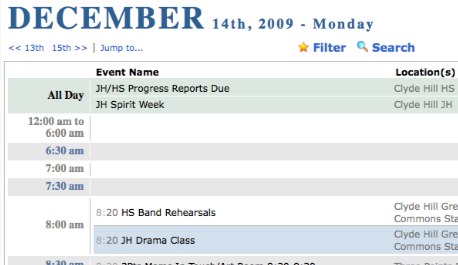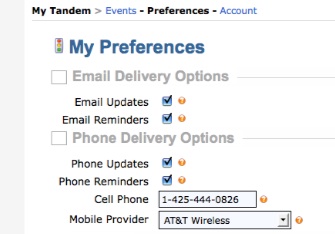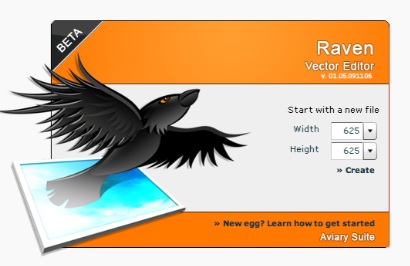Schools Save Money with Tandem
 Current economic conditions have many schools searching for ways to reduce costs without sacrificing a quality education.
Current economic conditions have many schools searching for ways to reduce costs without sacrificing a quality education.
Using Tandem for Schools, schools can not only improve communications with parents, staff and faculty but also more effectively manage school resources.
Facilities Management
Many school facility managers already use Tandem to avoid overbooking facilities or to resolve scheduling conflicts. Knowing when and how often a facility or room is used, Tandem can also help facilities managers better allocate budget dollars and achieve energy and other savings.
Identify New Revenue Opportunities
Many schools have venues which may be underused at different times of the year; by using Tandem, schools can identify these resources and potentially turn them into revenue generating sources by renting them out to outside groups, etc.
Transportation Management
How many buses? When? Where? Tandem allows for rapid fire communication to all stakeholders involved in an event. Tandem allows coaches, teachers and administrators to more effectively manage trips and reduce transportation costs. And advanced planning features allow school districts to budget transportation needs more effectively. Translation: more opportunities to save money.
School Administration
With multiple events at multiple venues going on at all times of the day, one last minute change can often lead to hours of work for staff and managing the calendar can be more than a full-time job. With Tandem, one change doesn’t have to lead to hours of phone calls and running around to parents, staff, etc. With Tandem, the minute the change happens, everyone can be updated instantaneously. One school district even was able to reduce the number of staff managing their calendar from two full time personnel to just one.
Lower Printing Costs
Rather than printing out school calendars and fliers reminding parents and students about upcoming school events, using an online school calendar can save time that is required to print out hundreds of documents and reduce the amount spent on paper and ink.
4 Reasons To Switch To An Internet School Calendar
There are many reasons why schools should make the switch to internet calendars from the traditional paper-based model. According to Tech Crunch “while more and more schools are turning to the web as a platform, less than 5% of schools, both public and private, are offering parents internet school calendars.”
1. Help communicate more effectively through digital tools
As more mobile devices gain internet connectivity, the internet is becoming more ubiquitous in our normal everyday activities. School communication can be amplified through digital tools like an internet school calendar that can be accessed from virtually anywhere that the internet is available. This allows students and parents to bring their school calendars everywhere they go and receive valuable school information in real time.
2. Reduce carbon footprint/save paper
One of the main sources of waste in schools was traditionally the printing of information. The distribution of important school information often required the printing of massive amounts of documents -monthly calendars, fliers, etc.. An internet school calender can eliminate the need to print documents and save a significant amount of paper and ink, which not only reduces the carbon footprint but costs as well (ink can cost thousands of dollars per gallon).
3. Encourage greater involvement of students and parents
There is little doubt that schools that are able to better engage their students, parents, and communities, will have better educational outcomes. Students who are engaged with after school activities improve their chances of getting into the college of their choice, and parents who are involved in school activities help student success. An internet school calendar can encourage engagement by providing information on school activities to make it easier to participate.
4. Reduce workload of school staff
Administrators who have switched to an internet school calendar often report a significant reduction of parent phone calls to the office. When school scheduling and event information is published to a central and updated location, like an internet school calendar, parents do not need to call the office for information.
Managing events for an entire school of up to thousands of students can be a monumental task. School event scheduling software like Tandem for Schools can make this task much easier with a streamlined facilities request system, automatic conflict checking, and simple publishing of events.
Learn more about switching to an internet school calendar. Schedule a free online demonstration of Tandem for Schools on your own computer.
If you are a parent and would like to support internet school calendars, you can suggest that your school consider switching at SchoolCal.org.
 1. Receive text message updates of specific school events
1. Receive text message updates of specific school events
Users of Tandem for Schools can get updates on school events sent directly to their mobile device via SMS. You can set up reminders for a specific event or updates on a school group like “Varsity Girls Soccer”.
2. Users can request to reserve a facility
Users that have been granted permission can send a request to the calendar manager to request to book an event at a specific time and place.
Members of the community could even be invited to request facilities for community events when the facilities are not in use, and the school can earn extra money.
3. Double booking conflict checking
When events are requested by users, Tandem for Schools automatically alerts the calendar manager whenever there is a scheduling conflict. This simplifies event scheduling for the school administrators and prevents two school groups from accidentally scheduling events at the same venue at the same time.
4. Post pictures and news of events
Anyone can upload photos and text into an event, which can be approved by the calendar manager. This can include action shots of a sports event or statistics from a game. Anyone can also submit reminders before the event like “Admission for non-students is $3”.
5. Manage school bus transportation to events
Tandem for Schools can be used to manage logistics for transportation to school events. Administrators can schedule bus trips, manage trip budgets, and manage requests from coaches.
6. Sync calendar with personal online calendars
Parents, students, and faculty may already have a personal online calendar that they use to manage their schedules such as Outlook, Google Calendar, iCal, or Cozi. No problem! Users of Tandem for Schools can sync the events that are important to them so that they are automatically fed to your existing online calendar.
7. Access the calendar from anywhere you have internet access
With Tandem for Schools, you don’t have to be at your desktop to access the school online calendar. The calendar is available online at a specific URL assigned to a school or district.
8. Filter events/Create custom calendar
You can filter the main school calendar to only show events that you specify. You can also set up a custom calendar that will only show events related to groups that you have chosen to track.
9. Customize calendar with school colors and logos
You can customize the look of your online school calendar to reflect your school colors and school logo.
10. Multiple views of the calendar
You can change the view of the calendar to yearly, monthly, daily, or list of events.
To learn more about the useful features of Tandem for Schools see the following blog post:
8 Things Parents Can Do With Intand’s Online School Calendar
or schedule a free demo on your own computer via Go To Meeting.
Google Wave is a new service fr om the internet giant that has the potential to greatly enhance the way students communicate with each other when creating group projects for class. Wave combines many of the best features and benefits of other real time editing tools into a near total solution for group work and project development.
om the internet giant that has the potential to greatly enhance the way students communicate with each other when creating group projects for class. Wave combines many of the best features and benefits of other real time editing tools into a near total solution for group work and project development.
When Google Wave is launched a student or educator will immediately be presented with a window where waves are separated into viewing fields in the center and right hand side of the screen. A handy organizer (much like an e-mail folder lit) and contact’s list are present on the left side.
A button aptly labeled “New Wave” will start a new project, and this is where a teacher or student can really begin to utilize the features of this service. If a social studies class project requires four partners to work together to create a presentation, then each of the four students can be quickly added to a new Wave specific to their assignment.
Each participant can log in and out of the Google service from home, school, or a public library while conducting independent research. Videos, pictures, and other attachments can be uploaded directly into the Wave viewing field for quick and easy access to all source materials; this also provides an easy way to back-up all versions of a project!
Wave provides many handy features and keyboard shortcuts that make it an ideal choice for schools where students are encouraged to utilize laptops for note taking and homework assignments. Students can add materials, chat about the progress of a class project, and more after mastering a few quick commands provided in an introductory video to Wave compiled by Google (this video will show up in a sample wave the first time the service is accessed).
Teachers concerned about unevenly balanced workloads within a group project can easily view a Wave with the built-in playback feature and see the development of the Wave (and research) to ensure that all students are properly credited for work done. Teachers can also use this feature to ensure that all participants are behaving according to school rules when communicating with each other in the course of a classroom assignment and to make sure that no instances of cyber-bullying occur. Parents and teachers can also rest assured their students are safe, as Waves can only be viewed by contacts who have been cleared to contribute to the project.
Google Wave provides a tremendous amount of benefits to the teacher or student wishing to maintain a hub for real time project collaboration in a controlled environment. Classroom and school utilization of Google Wave will help students learn the collaborative skills needed to succeed in a business world that centers around social media integration and introduce them to practical applications of technology.
Google Wave demo video:
Tandem for Schools, our online school calen dar software now offers text message integration so that users can receive text message updates of the school events that they care about.
dar software now offers text message integration so that users can receive text message updates of the school events that they care about.
Parents, students, and faculty can be away from the computer for most of the day, but many people carry around a cell phone with them at all times. If they have a user account with their school’s Tandem calendar they can change their preferences so that selected updates get sent directly to their phone via text message.
Currently users can log in and set reminders for specific events so that an email will be sent to their email inbox to remind them of an event within a specified time before the start of the event. You can also get email updates sent for all changes or new events for a specific group like Girls Varsity Soccer or Drama Club.
Text integration of a school calendar can improve school communication and save time for parents students and faculty. For instance, say you are a busy parent driving to a school baseball game, which has been canceled due to rain. You may receive a text message on your phone alerting you of this if you have signed up to track events for Boy’s Baseball and have them sent to your phone. Say you are a principal of the school and you want to alert students, parents, and faculty that school will be delayed for 2 hours due to an unexpected snow storm. You can add an event to the school calendar under a group called “Important School Notifications”. Now everyone who has signed up to track this group and receive text updates in their Tandem account can be notified of this important information via a text message.
Interested to learn more about Tandem school calendar software? Set up a free 1 on 1 demonstration on your computer here.
Ning: Create A Social Network For Your School
 Ning is a social networking platform that allows any user to create their own social network in a relatively quick amount of time for free. In an educational context, there are countless of ways to integrate Ning into a school or school system.
Ning is a social networking platform that allows any user to create their own social network in a relatively quick amount of time for free. In an educational context, there are countless of ways to integrate Ning into a school or school system.
A Ning social network has a main page that serves as a hub for the entire network. From this hub users can fan out into blog posts submitted within the network, photos uploaded to the pages, a calendar section, and user-driven forums. Schools, teachers, and school districts can all create Ning social networking groups to further communication between administrators, parents, and students.
Each part of a school can utilize Ning in a different way. For instance, a school board can create a Ning community to keep parents up to date on district developments and conversations can be held within the Ning forum concerning proposed legislation that will affect local schools and improvements parents would like to see within the system as a whole.
While schools and school boards can leverage the power of social networking effectively, a lot of Ning’s real appeal for educators focuses on teachers. Whether they are on the site as members of an educator’s group or as owners of a network tailor-made to suit the needs of their students, teachers have a lot of options.
Teachers can create a social network focused on bringing together English or math teachers to network ideas and provide insight into course specific issues. A class specific Ning could feature test dates, a list of homework assignments and projects due, and links to internet resources that can provide homework help or additional insight into a classroom theme. Since a Ning features customizable privacy options, including the ability to make a Ning invitation-only or private, the safety of students accessing the material can be assured.
The value of social networking in education is only beginning to be fully realized, and Ning is on the cutting edge of specialty networks created to bring together a specific group of people – like educators and their students.
Educational Video Resource For Teachers: Teachers.tv
 Teachers.tv is a dynamic site featuring a wide variety of educational videos for several different grade levels. While the site is based in the United Kingdom, the topics touched upon will provide an excellent learning aid to students worldwide. However, the usefulness of the site is not limited to students, both teachers and parents can use teachers.tv to find new ways to present content to their students or pick up tips from numerous videos focusing on educational concepts.
Teachers.tv is a dynamic site featuring a wide variety of educational videos for several different grade levels. While the site is based in the United Kingdom, the topics touched upon will provide an excellent learning aid to students worldwide. However, the usefulness of the site is not limited to students, both teachers and parents can use teachers.tv to find new ways to present content to their students or pick up tips from numerous videos focusing on educational concepts.
Teachers.tv contains instructionals covering the basic school subjects such as English, math, and science but also incorporates several electives. Videos on art classes, religious studies, music, and foreign language are also readily available for viewing. The content is easily divided into sections based on learning needs; Early learning, primary education, and secondary education classes are all covered.
The videos on teachers.tv vary in length with some as short as three minutes. One example of a short video entails a visit to the home of Charles Dickens – the short running time allows for the program to be implemented into an English period without draining a large block of class time. On days when a longer project is desired, there are plenty of additional options to choose from.
On the teachers.tv web-site, instead of the format for each class or video being the same, each teacher or video instructor is able to inject their own personality and teaching techniques into their presentation. A prime example of this is John Heely who leads several videos on teachers.tv focusing on algebra and algebraic concepts. Heely’s videos have a quality that rivals public television productions while maintaining a definite focus on presenting math in a relatable manner.
Whether they do it through the course of home study or as part of the school day, students will have no trouble identifying favorite subjects and instructors on teachers.tv. On a slow day for learning at school or for additional help mastering a new concept, students will never be without new educational material after a visit to this site.
Free Online Graphic Design Suite For Students
Aviary features a wide variety of free tools to enhance the photo editing and graphic creation process. The tools and web-based programs available at Aviary.com can be easily used by students to create dynamic reports, educational fair projects, and slideshows for any subject.
Aviary features six core applications: Phoenix, Toucan, Peacock, Myna, Raven, and Falcon. Each program can stand alone as a creative tool, but some, such as Phoenix, can bring in elements from other applications to enhance projects.
Phoenix is an image editor that features a wide var iety of tools to enhance photographs or assist in the crafting of new images from a blank file. It contains many features that are found in software packages such as Adobe Photoshop and Corel Paint Shop Pro, such as the ability to edit in layers and add unique filters. For a student who wants to add a deep visual element to a school report or display photos, this program will work well. Text can be added to pictures to eliminate the need for a separate caption and the clone stamping feature can be utilized to remove unneeded elements from a photo.
iety of tools to enhance photographs or assist in the crafting of new images from a blank file. It contains many features that are found in software packages such as Adobe Photoshop and Corel Paint Shop Pro, such as the ability to edit in layers and add unique filters. For a student who wants to add a deep visual element to a school report or display photos, this program will work well. Text can be added to pictures to eliminate the need for a separate caption and the clone stamping feature can be utilized to remove unneeded elements from a photo.
Toucan, the color editor from Aviary.com is useful for a student who is planning a project where a coordinated color scheme will come in handy. The various controls can be toggled to bring up a palette of compatible colors which can then be saved to a clipboard.
Peacock is an effects editor which features a drag and drop interface. Starting with a central canvas, various patterns and filters can be dropped onto the workspace and connected with the canvas to create unique files that would be perfect as backgrounds or accent pieces in a science or social studies fair presentation or slideshow.
Myna is an exceedingly easy to use audio editor perfect for the student who is crafting a presentation that needs to utilize various sound bites or feature a prerecording of various elements. It could also be used to create a podcast promoting school related activities.
Aviary.com has an exceedingly well-developed vector editor in Raven.  Raven will provide any student with the ability to create stunning graphics for projects, reports, displays, and school related publications. Aviary features a wide variety of tutorials and guides to ensure that this program does not leave an eager learner behind. The diversity of Raven also means it can be a fitting alternative to the typical art class. With the various effects and dimensions that can be added to graphics, stunning art can be crafted which makes Raven perfect for encouraging creativity.
Raven will provide any student with the ability to create stunning graphics for projects, reports, displays, and school related publications. Aviary features a wide variety of tutorials and guides to ensure that this program does not leave an eager learner behind. The diversity of Raven also means it can be a fitting alternative to the typical art class. With the various effects and dimensions that can be added to graphics, stunning art can be crafted which makes Raven perfect for encouraging creativity.
Falcon Image Markup is the last Aviary program currently available. This is another photo editing program, but its focus is not so much enhancing photos as adding to them. A selection of arrows, straight lines, and pencil strokes can be placed on any photo or created file within Falcon. This could work out particularly well when wanting to give a school presentation a more personalized and dynamic feel.
With the wide range of web-based photo and art programs to be found at Aviary.com, school students and parents can concentrate more on creating and less on the prohibitive cost of many designer programs. It also has the advantage of going home with students since it is free and can be used through a browser. Most schools will not let students take home computers with Adobe Creative Suite, which costs about $400 per license for the student version.
Using Blogs In the Classroom
In blogs, educ ators are discovering a new tool for engaging students who live in a world increasingly dominated by technology. By incorporating blogging into the school environment, educators can capitalize on the social media explosion, turning a potentially isolating medium into a window of discovery and self-expression as well as a bridge to the broader learning community.
ators are discovering a new tool for engaging students who live in a world increasingly dominated by technology. By incorporating blogging into the school environment, educators can capitalize on the social media explosion, turning a potentially isolating medium into a window of discovery and self-expression as well as a bridge to the broader learning community.
Naturally when confronted with change there will be some resistance among educators to adopt and embrace this new medium, just as the advent of the internet posed a classroom challenge. Yet the reality is that today’s students are already immersed in social media and schools can either seize this new opportunity or play the proverbial ostrich. Ideally educators will lead and not lag behind at this transformative moment by encouraging youth to utilize this amazing technology as more than just an entertaining diversion.
Subscription services like EdublogsCampus, based on the WordPress platform, provide the technical framework and support to get schools started. Luckily for educators, tech-savvy students make excellent navigators, and engaging their help fosters a spirit of cooperation and sense of mastery. Classroom blogs can serve any number of purposes, as student newspaper, sharing information, writing practice, homework submission and testing forum, tracking tool for parents, online calendar, and so on. Security is of course a key concern, and web-hosting services offer custom access levels to assure student safety and confidentiality.
Blogging is a natural for facilitating extension of lessons, replacing old norms of information regurgitation and bringing lessons to life through interactivity, journaling and use of multi-media. Blogging provides the ideal avenue for sharing the learning experience, furnishing a vehicle for budding photographers, poets and artists to share their talent in a non-threatening forum. Blogs offer a creative outlet and give students a voice in what may be their only outlet or experience of being heard.
Beginning at the earliest school level, introducing blogs into the classroom fosters an environment of cooperation and recognition of the talents of each individual. At the same time, students are learning and applying technical and communication skills that they will take into the workplace, fulfilling the ideal of learning as an ongoing process and lifelong journey.
Using Facebook In Education
While the thought of Facebook as a learni ng tool might elicit some skepticism, savvy students are discovering uses for the ubiquitous social media site beyond trading gossip and playing games. In fact, Facebook offers an array of applications geared to student needs. Web tools like Do Research 4 Me, Wikiseek Search, and JSTOR Search take the tedium and legwork out of researching term papers. Applications are available for homework assistance, forming virtual study groups, finding the best deals on textbooks, and of course Rate My Professors.
ng tool might elicit some skepticism, savvy students are discovering uses for the ubiquitous social media site beyond trading gossip and playing games. In fact, Facebook offers an array of applications geared to student needs. Web tools like Do Research 4 Me, Wikiseek Search, and JSTOR Search take the tedium and legwork out of researching term papers. Applications are available for homework assistance, forming virtual study groups, finding the best deals on textbooks, and of course Rate My Professors.
Teachers are getting aboard the Facebook bandwagon and establishing accounts of their own, finding it an effective bridge beyond the classroom, freeing them of late night calls from frantic pupils and parents seeking last-minute information on the week’s spelling words or a project due the next day. Facebook also fills a crucial gap as a forum for providing homework guidance and lesson-extending tutorials that may be lacking for latch-key kids. When Facebook is integrated into the learning environment, it helps create a safe online community that parents can feel confident about.
Facebook even provides opportunities for parent involvement through online interaction in a platform that is flexible enough to fit even the busiest schedule. As a conduit for communication it helps build teacher-student-parent relationships beyond the constraints of classroom walls and school schedules, and it does so in a way that is non-intrusive and non-threatening. A parent who dreads the idea of attending a parent-teacher conference after a long day of work and putting a meal on the family table is likely to relish being able to conduct a meeting at their fingertips. In this manner, Facebook creates new opportunities for dialogue between teachers, parents and students, spanning generational, geographic, and cultural distances. When students see that teachers are willing to “speak their language” and use the tools of their generation, amazing connections can occur.
Do you think Facebook has a role in education? Leave your comments below.